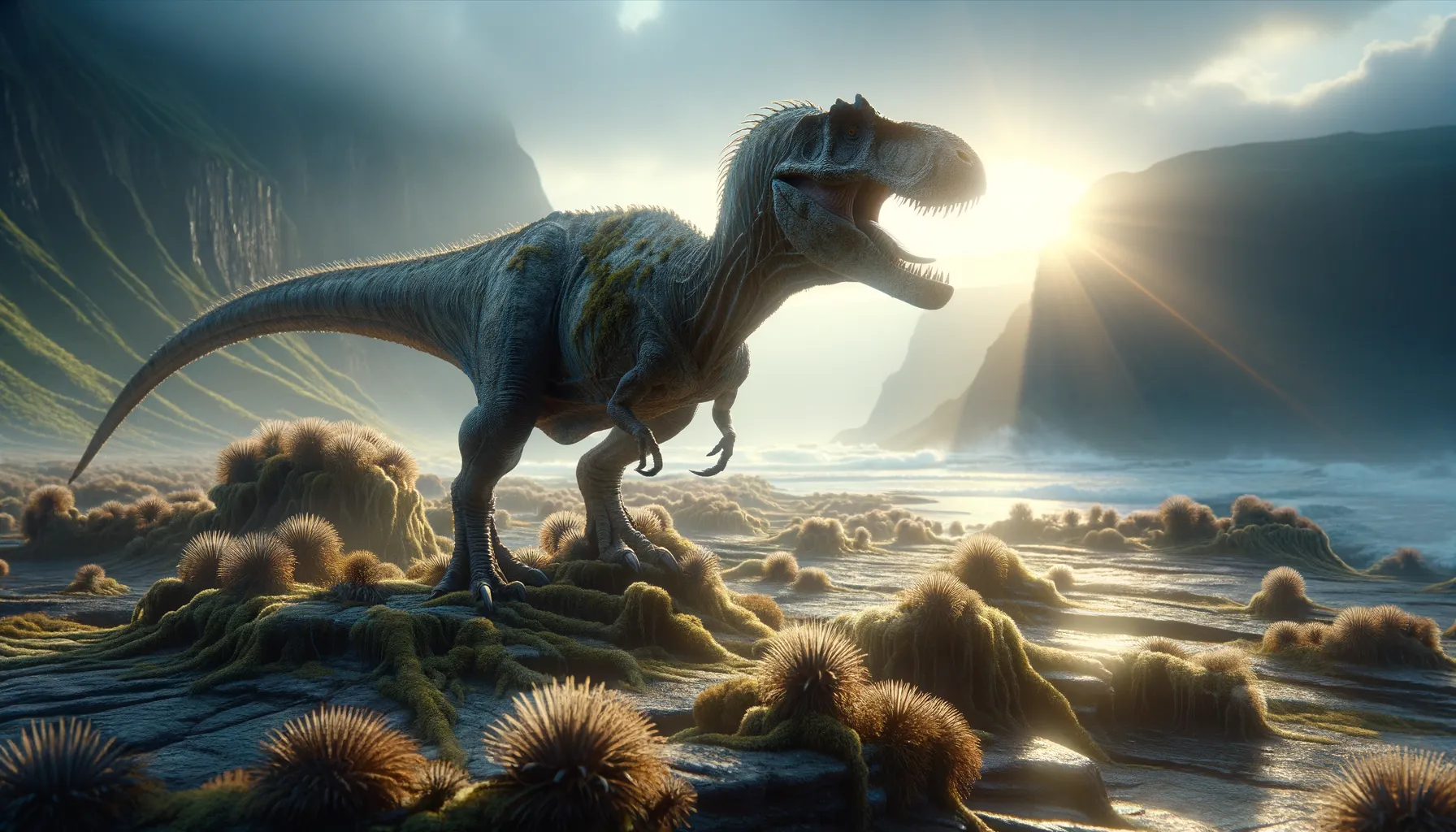
Walgettosuchus
Elusive remains spark scientific intrigue!
Period
Cretaceous
Length
Estimates are uncertain.
Height
Unknown due to fragmentary fossils.
Weight
Unknown as remains are too incomplete.
Walgettosuchus is a little-known theropod dinosaur due to its sparse fossil record. Identified from fragmentary remains, experts have struggled to piece together a complete understanding of its biology and ecology. Although not much is known, it was part of the diverse array of species that roamed the Earth during the Cretaceous period. It remains a subject of intrigue and speculation among paleontologists, who continue to search for more complete specimens.
Diet
The diet of Walgettosuchus remains speculative. Given its classification as a theropod, it might have been carnivorous, feeding on small animals or other carrion. However, without direct evidence, these details remain unconfirmed.
Hunting
Due to a lack of proper fossil evidence, the hunting behavior of Walgettosuchus is largely unknown. If it was indeed a theropod, it might have relied on speed or ambush tactics, although this is purely conjectural.
Environmental challenges
Walgettosuchus faced the challenges typical of the Cretaceous period, such as climatic fluctuations and competition for resources. Predatory threats from larger theropods might have influenced its behavioral strategies. Environmental changes over time could have impacted its habitat and survival, resulting in its eventual extinction.
Speed
Unknown due to lack of fossil evidence.
Lifespan
Unknown due to fragmentary remains.
First discovery
First described in 1933 based on limited remains.
Fun Facts
- Walgettosuchus is a dinosaur known mostly from very limited fossil remains, which makes it a bit of a mystery.
- Its fossils were discovered in New South Wales, Australia, and it was first described in 1932.
- The name Walgettosuchus means 'Walgett crocodile,' named after the area near where its remains were found.
- Despite its name suggesting a connection to crocodiles, Walgettosuchus was actually a theropod dinosaur, related to other carnivorous dinosaurs.
- Only part of a single vertebra (a back bone) has been found, so many details about Walgettosuchus remain unknown.
- Walgettosuchus lived during the Cretaceous period, a time when many famous dinosaurs roamed the Earth.
- Because of the scant fossil evidence, some scientists debate the accuracy of assigning Walgettosuchus as a distinct genus.
Growth and Development
Little is known about the growth and development of Walgettosuchus, given the paucity of fossil evidence. Researchers speculate that, like other theropods, it might have gone through rapid growth stages early in its life. Juvenile characteristics and the transition to adulthood remain speculative without more comprehensive fossil material.
Habitat
The specific habitat of Walgettosuchus is difficult to ascertain due to limited fossils. It likely inhabited regions that were prevalent during the Cretaceous, such as forested areas or open plains. The landscape may have included various ecological zones supporting an array of flora and fauna contemporaneous with this enigmatic dinosaur.
Interaction with other species
Direct interactions with other species are unknown, but Walgettosuchus likely coexisted with various contemporaneous dinosaurs and mammals. It may have had competitive or predatory relations with other theropods. Its ecological interactions would have played a role in shaping its lifestyle, survival strategies, and potential food sources.
Natural lifespan
The natural lifespan of Walgettosuchus is unknown.
Reproduction
Knowledge about the reproductive behavior of Walgettosuchus is currently unknown. Like many theropods, it might have laid eggs, but the specifics of nesting and parental care remain speculative.
Social behaviour
The social behavior of Walgettosuchus is undetermined due to limited evidence. It may have hunted alone or in small groups, typical of many small theropods. Social organization and communication, if any, are unknown.
Fossil locations
Walgettosuchus fossils were found in Australia. The limited remains make it challenging to ascertain much about this dinosaur. Ongoing fossil discoveries may eventually shed more light on its biology and ecological role.
